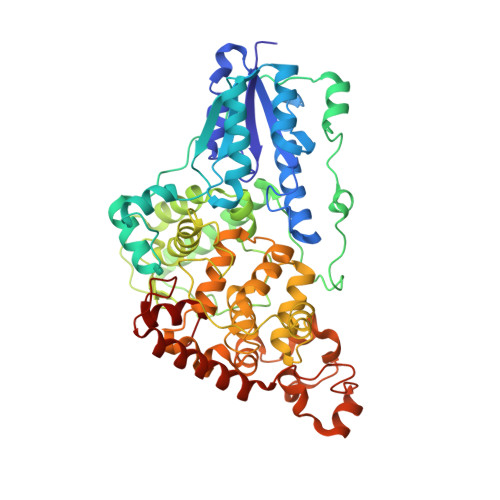Room-temperature serial synchrotron crystallography of Drosophila cryptochrome.
Schneps, C.M., Ganguly, A., Crane, B.R.(2022) Acta Crystallogr D Struct Biol 78: 975-985
- PubMed: 35916222
- DOI: https://doi.org/10.1107/S2059798322007008
- Primary Citation of Related Structures:
7UD0 - PubMed Abstract:
Fixed-target serial crystallography allows the high-throughput collection of diffraction data from small crystals at room temperature. This methodology is particularly useful for difficult samples that have sensitivity to radiation damage or intolerance to cryoprotection measures; fixed-target methods also have the added benefit of low sample consumption. Here, this method is applied to the structure determination of the circadian photoreceptor cryptochrome (CRY), previous structures of which have been determined at cryogenic temperature. In determining the structure, several data-filtering strategies were tested for combining observations from the hundreds of crystals that contributed to the final data set. Removing data sets based on the average correlation coefficient among equivalent reflection intensities between a given data set and all others was most effective at improving the data quality and maintaining overall completeness. CRYs are light sensors that undergo conformational photoactivation. Comparisons between the cryogenic and room-temperature CRY structures reveal regions of enhanced mobility at room temperature in loops that have functional importance within the CRY family of proteins. The B factors of the room-temperature structure correlate well with those predicted from molecular-dynamics simulations.
- Department of Chemistry and Chemical Biology, Cornell University, Ithaca, NY 14850, USA.
Organizational Affiliation:

















